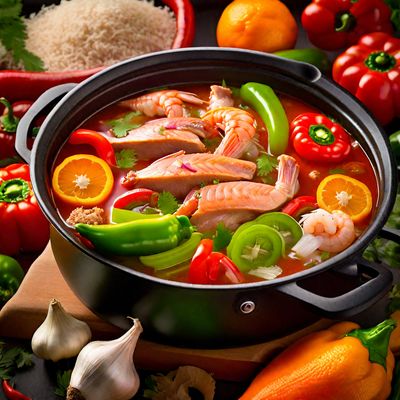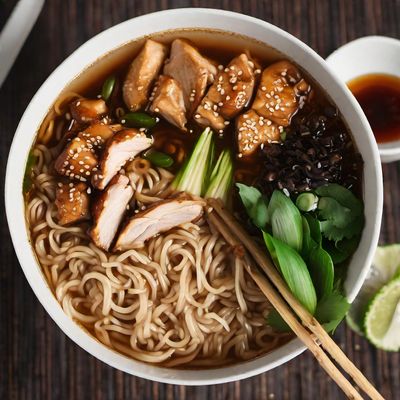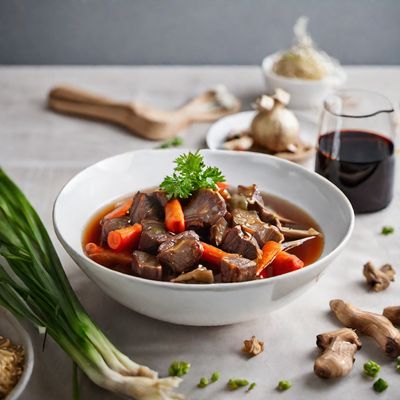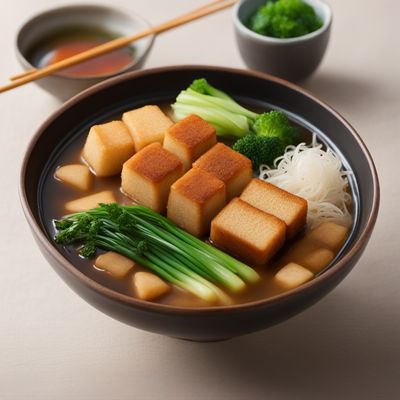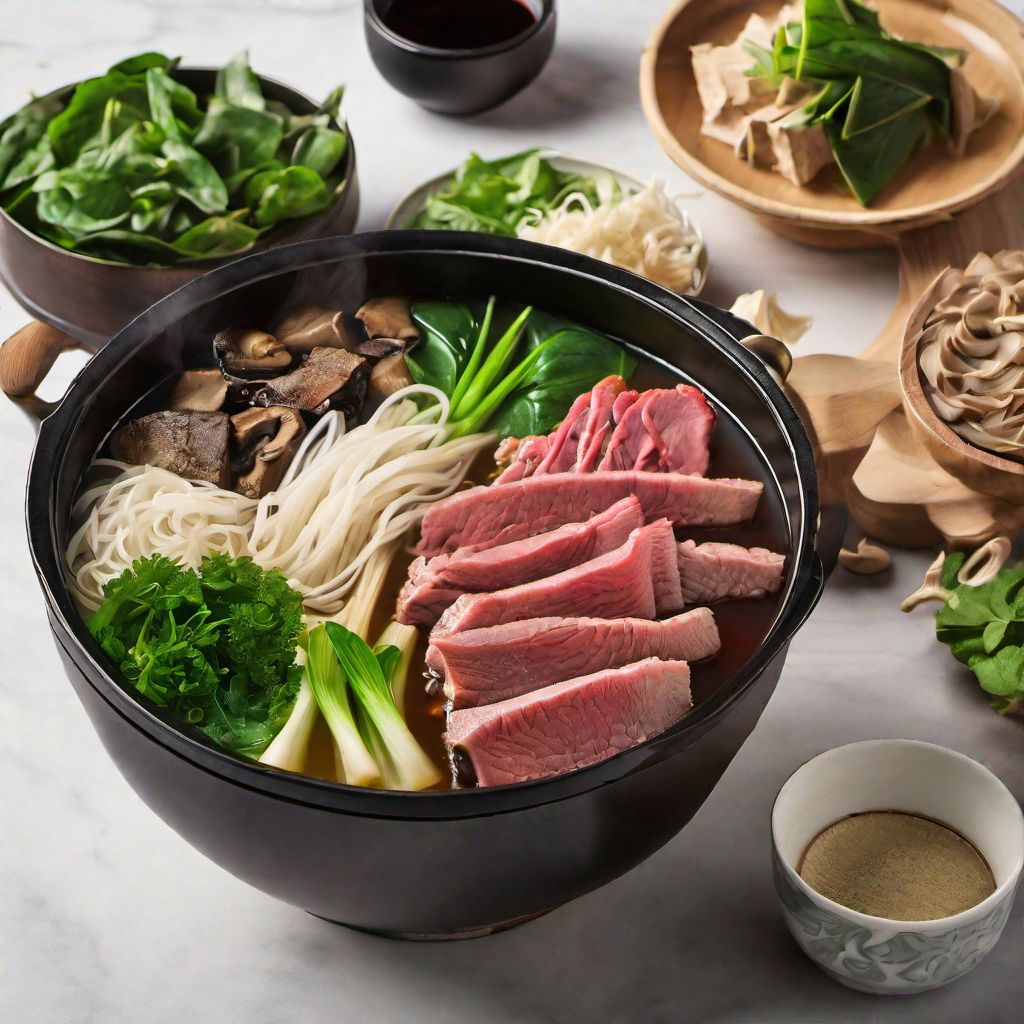
Recipe
Japanese-style Hot Pot
Umami Delight: Japanese Hot Pot
4.4 out of 5
In Japanese cuisine, hot pot, known as "nabe," is a beloved winter dish that brings people together around a simmering pot of flavorful broth. This adaptation of the Chinese hot pot incorporates Japanese ingredients and flavors, resulting in a comforting and nourishing meal.
Metadata
Preparation time
20 minutes
Cooking time
20 minutes
Total time
40 minutes
Yields
4 servings
Preparation difficulty
Easy
Suitable for
Pescatarian, Gluten-free (use gluten-free soy sauce and miso paste), Dairy-free, Low-calorie, Low-carb
Allergens
Soy (in soy sauce and miso paste), Wheat (in soy sauce and udon noodles), Fish (in dashi stock)
Not suitable for
Vegan (due to the use of dashi stock), Nut-free (depending on the specific ingredients used)
Ingredients
The Japanese-style hot pot differs from its Chinese counterpart in terms of ingredients and flavors. While both dishes involve cooking various ingredients in a communal pot, the Japanese version often features lighter broths, delicate seafood, and a focus on umami flavors. We alse have the original recipe for Hot Pot, so you can check it out.
-
4 cups (950ml) dashi stock 4 cups (950ml) dashi stock
-
2 tablespoons soy sauce 2 tablespoons soy sauce
-
2 tablespoons mirin 2 tablespoons mirin
-
1 tablespoon sake 1 tablespoon sake
-
1 tablespoon miso paste 1 tablespoon miso paste
-
1 tablespoon grated ginger 1 tablespoon grated ginger
-
2 cloves garlic, minced 2 cloves garlic, minced
-
8 ounces (225g) thinly sliced beef or pork 8 ounces (225g) thinly sliced beef or pork
-
8 ounces (225g) firm tofu, cut into cubes 8 ounces (225g) firm tofu, cut into cubes
-
4 shiitake mushrooms, sliced 4 shiitake mushrooms, sliced
-
1 cup napa cabbage, chopped 1 cup napa cabbage, chopped
-
1 cup spinach leaves 1 cup spinach leaves
-
1 carrot, thinly sliced 1 carrot, thinly sliced
-
4 green onions, sliced 4 green onions, sliced
-
1 cup enoki mushrooms 1 cup enoki mushrooms
-
1 cup udon noodles 1 cup udon noodles
-
1 tablespoon sesame oil 1 tablespoon sesame oil
-
Salt and pepper to taste Salt and pepper to taste
Nutrition
- Calories (kcal / KJ): Approximately 300 kcal / 1255 KJ per serving
- Fat (total, saturated): 10g, 3g
- Carbohydrates (total, sugars): 25g, 5g
- Protein: 25g
- Fiber: 5g
- Salt: 2g
Preparation
-
1.In a large pot, combine the dashi stock, soy sauce, mirin, sake, miso paste, grated ginger, and minced garlic. Bring to a simmer over medium heat.
-
2.Arrange the thinly sliced beef or pork, tofu, shiitake mushrooms, napa cabbage, spinach leaves, carrot, green onions, enoki mushrooms, and udon noodles on separate plates.
-
3.Place the pot of simmering broth in the center of the dining table and provide each guest with a small bowl for dipping sauce.
-
4.To cook, dip the ingredients into the simmering broth until cooked to your liking. Use chopsticks or a slotted spoon to retrieve the cooked ingredients.
-
5.Serve the cooked ingredients with a dipping sauce made by combining soy sauce, grated ginger, and sesame oil. Season with salt and pepper to taste.
Treat your ingredients with care...
- Beef or pork — For a more tender result, slice the meat thinly against the grain.
- Tofu — Use firm tofu to prevent it from breaking apart during cooking.
- Udon noodles — Cook the noodles separately according to package instructions and add them to the hot pot just before serving to prevent them from becoming too soft.
Tips & Tricks
- To enhance the umami flavor, consider adding dried shiitake mushrooms to the broth while simmering.
- Experiment with different dipping sauces by adding ingredients like sesame seeds, chili oil, or ponzu sauce.
- Don't overcook the delicate ingredients like seafood and vegetables to maintain their texture and flavor.
- Use a hot pot with a divider if you have vegetarian or vegan guests to separate the meat-based broth from the vegetable-based broth.
- Leftover hot pot broth can be used as a flavorful base for soups or stews.
Serving advice
Serve the Japanese-style hot pot with individual bowls for each guest to enjoy the cooked ingredients and dipping sauce. Encourage guests to try different combinations of ingredients and flavors.
Presentation advice
Present the hot pot by placing the simmering pot in the center of the table, surrounded by the arranged plates of raw ingredients. This communal dining experience adds to the enjoyment of the meal.
More recipes...
For Hot Pot » Browse all
For Chinese cuisine » Browse all
More Chinese cuisine dishes » Browse all
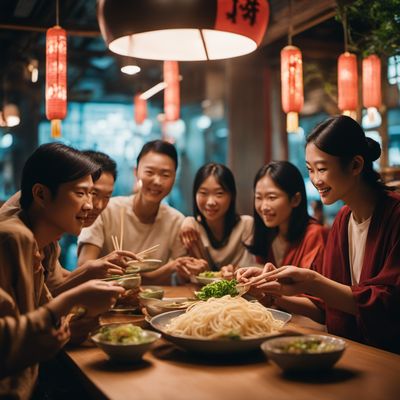
Liangpi
Cold Skin Noodles
Liangpi is a cold noodle dish that is popular in China, particularly in the Shaanxi province. It is made with wheat or rice noodles that are...
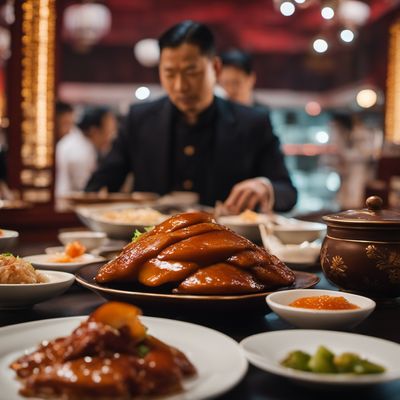
Peking Duck
Peking Duck is a famous Chinese dish that is made by roasting a duck until the skin is crispy and golden brown. The dish is known for its rich...
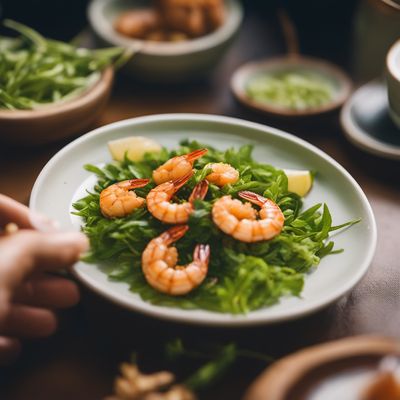
Fried Shrimps with Longjing Tea
Fried shrimps with Longjing tea is a Chinese dish that combines crispy fried shrimp with the delicate flavor of Longjing tea. The dish is...
More Japanese cuisine dishes » Browse all

Daifuku
Daifuku is a traditional Japanese sweet that is made with mochi and filled with sweet red bean paste.

Yokosuka Navy Curry
Japanese Navy Curry Stew
Yokosuka Navy Curry is a Japanese dish that was created by the Japanese Navy during the Meiji era. It is a hearty and flavorful meal that is...

Satatsuri
Satatsuri is a traditional Japanese soup that is made with miso paste, tofu, and seaweed. It is a simple and comforting soup that is perfect for a...

